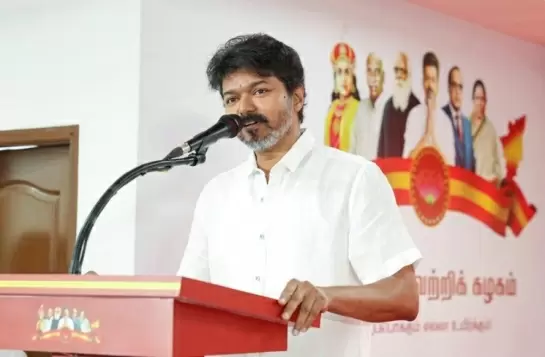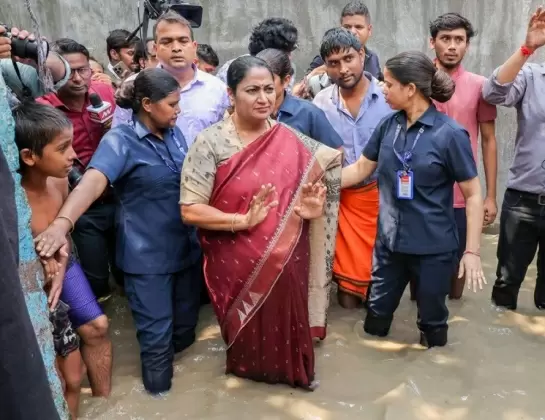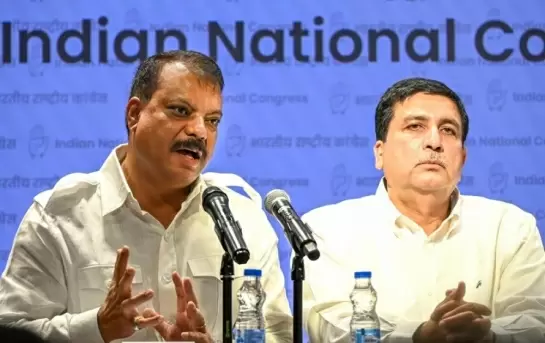Exit polls indicate trend, not actual results: Experts
19-May-2019
Before the actual results are out, the demand for the exit poll data usually outweighs the accuracy of its prediction, as these polls normatively indicate what the nation could expect on the counting-day.
Voting for the long-winded seven-phased general elections for the 17th Lok Sabha has come to an end and it will lead into flurry of exit polls prediction. These predictions serve two purposes -- provide real time data on voting trends, and electorate's views on election issues and candidates. But they have a problematic history.
The beginning of exit polls
In 1996, the government-controlled Doordarshan engaged the Centre for the Study of Developing Societies (CSDS) to conduct exit poll. It accurately predicted a fractured-mandate -- the Bharatiya Janata Party (BJP) fell short of the majority, but emerged as the single largest party. Atal Bihari Vajpayee though formed the government, but resigned before his government could complete two weeks in office. Although, it began on a positive note, but as it evolved it brought forth in-built inconsistency in the process.
In 1998, the top four election surveys -- India Today/CSDS, DRS, Outlook/AC Nielsen and Frontline/CMS -- predicted a victory, but less than 272 seats, for the BJP-led NDA. Eventually, the NDA got 182 seats.
In 1999, all the major exit polls went over-board in making prediction for the BJP-led NDA. In fact, poll masters held that the BJP will easily cross the 300-mark, but it fell short, though not far behind -- the NDA won a clear majority with 296 seats. And, the Congress-led coalition folded up at 134 seats; somehow accurately predicted by polls. But the pollsters failed to predict the seats won by other parties and Independents in 1999. Together they got 113 seats, against the lowest 34 and the highest 95 seats predicted by pollsters.
Beginning of failure
In 2004, the exit polls predicted a comfortable victory for the BJP-led NDA, the lowest at 248 and the highest at 290. But the election results turned these predictions upside down. The NDA was limited at 189 seats. The polls also failed to predict seats for the Congress-led UPA as well as other parties. The polls completely failed to map electorates' mood.
In 2009, the pollsters' failed yet again. The Congress-led UPA won 262 seats, a figure no pollster could even come close, and formed the government. The predictions also failed to map out seats for the BJP-led NDA, which won 159 seats -- the lowest prediction was 177 and the highest 197.
In a big surprise the exit polls indicated a neck-and-neck contest between the coalitions led by the Congress and the BJP, which ended up as second-in-row failure.
In 2014, although top four election surveys predicted a clear majority for the BJP-led NDA, but nothing above 290. The pollsters' failed to see the Narendra Modi wave, which swept elections and gave the NDA 336 seats.
From the election results over the years, it's clear exit polls have already failed to predict the electorates' mood.
But, renowned psephologist Yogendra Yadav believes exit polls, with only an exception in 2004, have not gone wrong all the way in indicating the direction in which electorate has voted.
"Except 2004, the exit polls have not gone wrong actually. They have clearly established the direction in which the electorate has voted, which by far, fair enough to conclude that polls survey was actually good. It is a myth that exit polls can make accurate predictions. It is not fair to criticise these polls lacking accuracy," said Yadav speaking with IANS.
If Dog Lovers Care So Much, Let Them Open Their Guest Rooms for Strays, Says Director Ram Gopal Varma
INDIA Bloc Accuses Election Commission of Acting as BJP’s Mouthpiece
Trump Tells Zelensky to Give Up Territory for Peace Deal with Russia
Indian Agencies Bust ISI Spy Network Recruiting Influencers and Security Staff
PM Modi Vows to Protect Farmers Amid US Tariff Threat in Independence Day Speech









